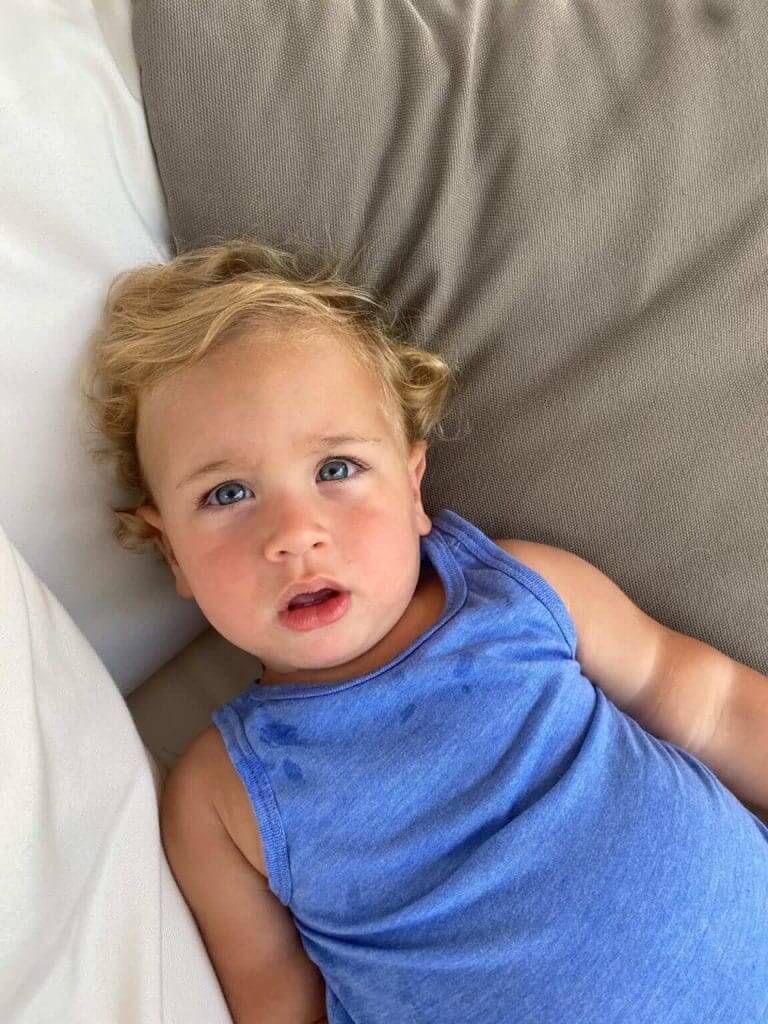
Breath holding spells
Breath holding spells are a common and frightening phenomenon. I believe that parents’ knowledge and understanding of the phenomenon, will help them to cope with it easier.
Several points I would like to emphasize:
1. This is not cot death (there’s a separate article about it in the website, here), or apnea in infants or premature babies.
2. This medical condition in not found in the chapters of pulmonary disease in medical textbooks as it is in this site, but somewhere in chapters about behavioral and / or neurological disorders.
So is this just a behavioral disorder?
What are breath holding spells? What characterizes the phenomenon?
These are kind of reflexive attacks that usually begin with crying, followed by the child stopping to breathe and becomes pale or even blue, mostly around the mouth, on the verge of faint or unconsciousness (which rarely happens). In extreme cases there is a brief seizure at the end of the event.
After the event the child comes to himself without residual damage.
The trigger can be anything that upsets or stresses the child, often something sudden. For instance, snatching a toy, pain, frustration or fear or any other stressor.
What are the different types of breath holding spells in children and at what age are they common?
Three types which are called Cyanotic (bluish), Pallid (pale) or mixed. The mechanism and emphasis in each type are slightly different.
Cyanotic – The most common type during which the child turns blue. The mechanism of this type combines respiratory arrest and unusual pulmonary blood flow (shunting).
Pallid – Much less common. Characterized by quiet and light cry followed by the child becoming pale. Slightly different mechanism combining vagal reflex that leads to a slowing of the heart rate.
The common age for the start of this spells is usually 6-18 months.
This phenomenon is family related- try to remember if one of the parents had these spells.
What is the medical reason for breath holding spells in children?
Unfortunately, I didn’t find a clear answer to this question in the medical text books.
It is obvious that the spell has a significant behavioral component, but on the other hand it is also clear that there is also a medical reason to the fact that a certain child is more prone to having these seizures. It is likely that it might be linked to immaturity of the nervous system in these children, which is not directly subject to behavior or thinking.
What should parents do during a spell?
In general, in typical cases of cyanotic spells, the medical recommendation is to “ignore it”.
In other words, the more attention the parent will give to the event, the greater the chance of further events. Getting the child wet, shouting, holding him from the legs upside down and other sorts of exercises are harmful.
In cases of pallid or mixed spell a medical evaluation should be done.
What can be done to reduce the frequency of the events?
On the behavioral level – the event should get as little attention as possible, during and after it occurs. The parent can hug and kiss the child but without compensation and rewarding.
You can try and avoid the situations you know that trigger the event, but not at the cost of indulging and dismissing the set boundaries. For instance, before getting a vaccine the child can be prepared for it and not get vaccinated by surprise.
On the medical level – hemoglobin and iron levels should be tested in these children. In children in whom iron deficiency is identified (and even in some that doesn’t have a deficiency) iron therapy slightly reduces the number of events for an unclear reason. In exceptional cases, including the pallid type, a cardiac evaluation including blood tests, ECG and cardiac echocardiography should be considered.
In super exceptional cases, treatment with a variety of drugs that lower prevalence (such as atropine), is recommended.
Remember that the spells end by themselves, without any external help from us and that their frequency decreases over the years.
Which of the children should have a more extensive medical examination?
I recommend seeing a paediatrician after you have observed your child’s first breath holding event.
The physician will hear the story of the disease and will look for “red flags” for which a comprehensive examination should be conducted.
I will emphasize that in cases of respiratory arrest of the pallid type, in which the child turns white and not blue, you should discuss with your physician the possibility of a brief medical examination.
To sum things up, breath holding spells are unpleasant but usually not terrible and always transient. There is room for your child’s physician examination in order not to miss a background disease or other similar conditions, but in general, we as parents have control over these events mostly in the sense of staying calm and holding it together.
In the long run, these episodes do not put the child at risk for any disease or behavioral problem.
For comments and questions, please register
